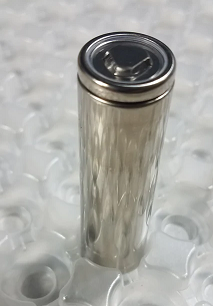Lithium Ion Batteries
Sony was the first to commercialize rechargeable lithium-ion batteries in 1991. Since then this humble battery has revolutionized the world.
Indeed in retrospect this invention was so significant and momentous that the 2019 Nobel Prize in Chemistry was awarded to three individuals who made the most contributions to the development of this technology. In awarding the prize the Nobel committee made the following statement
This rechargeable battery laid the foundation of wireless electronics such as mobile phones and laptops. It also makes a fossil fuel-free world possible, as it is used for everything from powering electric cars to storing energy from renewable sources.
In this post I will explore the story of this humble battery.
Where it comes from
Lithium was discovered in 1817. It is the lightest solid element, with half the density of water. It is extracted from brine, salt deposits, and hard rock. Like any other precious resource Lithium is not uniformly distributed across the planet. In 2021 the world produced 105 thousand tons of Lithium and just two countries — Australia & Chile accounted for 75% of production. A typical phone battery has 1–2 grams of lithium and a laptop battery has 4–5 grams. An electric car will have 7–9 kg of lithium in its battery pack. Note: This isn’t the weight of the battery itself, it’s the weight of the lithium content of the battery. A typical phone battery might weight 30 grams, and a car battery could weigh between 450 and 600 kg.
What is so special about Lithium-ion batteries?
A Lithium-ion battery is an electrochemical cell just like the Cu-Zn voltaic cell found in a chemistry textbook. A spontaneous redox reaction occurs at the battery electrodes when the positive and negative terminals are connected together by an external circuit. Lithium happens to have one of the lowest electrode potentials of all the known elements at -3.05V. In other words there is no better anode material available in nature. Fluorine is the opposite of Lithium and is hungry for electrons and has an electrode potential of +2.87V.

No practical Fluorine batteries exist and even if they did they wouldn’t be leaps and bounds better than Lithium batteries. So it isn’t a stretch to say that Li-ion batteries are the holy grail of battery technology.
This is an important point. Due to the extremely rapid pace of technological progress and innovation that began in the 1950s, there is a tendency to expect and assume that such growth will continue far into the future. If such expectations aren’t grounded in science, they enter the realm of science fiction. These expectations in miraculous future technology can become problematic if they prevent us from making positive changes at present time.
How they work
However getting to the holy grail wasn’t easy, and Li-ion batteries aren’t simple devices like the Cu-Zn voltaic cells that can be demonstrated in the classroom using a couple of beakers and readily available materials. The physics of Li-ion batteries is extremely complicated.
From an article on nature.com:
A modern lithium-ion battery consists of two electrodes, typically lithium cobalt oxide (LiCoO2) cathode and graphite (C6) anode, separated by a porous separator immersed in a non-aqueous liquid electrolyte using LiPF6 in a mixture of ethylene carbonate (EC) and at least one linear carbonate selected from dimethyl carbonate (DMC), diethyl carbonate (DEC), ethyl methyl carbonate (EMC) and many additives. During charging, Li-ions move from the LiCoO2 lattice structure to the anode side to form lithiated graphite (LiC6). During discharging, these ions move back to the CoO2 host framework, while electrons are released to the external circuit. It is this shuttling process or what is called rocking-chair chemistry that has revolutionized our modern life.
Note that there is no pure Lithium metal in a Lithium-ion battery. Pure lithium batteries had a tendency to catch fire due to the development of internal short-circuits. The solution to this was intercalation.
The term ‘intercalation’ refers to a process whereby a guest molecule or ion is inserted into a host lattice. The structure of the guest–host or intercalation compound is only slightly perturbed from the host structure and the reaction used to form the compound is reversible.
What this means in simple words is that some materials are able to behave like sponges at the molecular level. Just as a sponge can soak and store water without a significant change in volume the cathode and anode materials of the Li-ion battery are able to hold Lithium ions within their crystal structure. Another useful analogy is of a multi-level parking lot. The Li-ions are like cars that move in and out of parking spots. But the parking garage doesn’t get bigger just because there’s cars in it.
So in summary a Li-ion battery does not contain metallic lithium. It contains Lithium ions that are intercalated in the cathode and anode materials. The ions move between the electrodes alternately during the charging and discharging cycles and the electrons flow through the external circuit. Where do the electrons come from? The Li-ion intercalated in the graphite anode is already lacking in electrons (it’s a positively charged cation). The electrons are supplied by graphite, which like metals has a bunch of ‘free’ electrons.
Li-ion battery properties
Battery performance is often evaluated using metrics such as energy density (Wh/kg and Wh/L). A good battery is one that can store a lot of energy, isn’t very heavy, and doesn’t take up a lot of space. The chart below shows energy densities of various battery chemistries.

A better way to visualize this is by way of comparison. A 12V lead-acid car battery

has the following specifications: 12V, 45–60Ah, 15–20 kg weight, 6000 to 8000 cc volume. So the energy density of such a battery is ~40 Wh/kg and ~80 Wh/L.
A Panasonic 18650 standard cylindrical cell is 3.6V, 3.2Ah, 17cc and 50 grams. The energy density is 230 Wh/kg and 670 Wh/L.

So a 12V, 45Ah, 15kg lead acid battery can theoretically be replaced by Li-ion cells in a 14P4S configuration.14P means 14 parallel cells, and 4S means 4 banks of 14 parallel cells wired in series.
The rules for combining batteries into a ‘pack’ is as follows:
- Voltage of series cells are added together
- Currents (capacity) of parallel cells are added together
- Power (Watts) increased in both series and parallel configurations
So our 14P4S pack has a voltage of 4*3.6V = 14.4 V and capacity of 14*3.2 Ah = 44.8 Ah and weighs 14*4*50g = 2.8 kg. If the cells were standing up, and laid in a 14x4 grid they would occupy ~1200 cc. This would be < 20% of the weight and volume of a standard lead-acid car battery.
However you can’t simply replace standard lead-acid battery with a homemade Li-ion pack. And the main reason is that Li-ion batteries aren’t quite as robust and abuse tolerant as lead-acid batteries. Li-ion batteries need to be closely monitored by a control board for safe and efficient operation.
Sustainability
Lithium-ion batteries (LIB) can be used to power ZEVs and in grid storage applications in tandem with intermittent renewable generation technologies like wind and solar. However Lithium is itself not a renewable resource, and LIB recycling is not being done at scale.
Lead-acid batteries are widely recycled because they are relatively easy to disassemble and break-down into component parts. As mentioned earlier there is a miniscule amount of Lithium in each cell (2g in a 30g cell), and large battery packs are simply a collection of small cells welded together. A 450kg Tesla battery pack contains over 7000 individual cells, and recycling the 7–8kg of Lithium compounds in the battery pack requires extracting the miniscule amounts of Lithium from each cell. This is an extremely labor, and energy intensive process. One recycling method called pyrometallurgy involves shredding the battery pack into small pieces and then heating it to 1500C to extract Nickel, and Cobalt. However Lithium will be burned off in this process, i.e. not being recycled. A second method called hydrometallurgy which uses acids to dissolve the metals is able to recover Lithium. However it is obviously a dangerous process that involves large amounts of toxic chemicals. Recycling LIBs will not be economical for a long time, and the recycling methods are not simple or efficient.
Lithium mining involves large earth moving equipment like any other mining operation and these run on petroleum. Also as demand for Lithium grows, the mining operations will also grow in scale. Mining is environmentally destructive and requires a lot of energy, and precious resources like water. Ultimately Lithium is a finite, non-renewable resource.
Final Thoughts
Since their introduction in 1991 LIBs have taken over the battery market. Today they are found everywhere: airplanes, cars, forklifts, portable electronics, and grid storage applications. LIBs provide a great means to store energy efficiently. They are a great way to transition away from petroleum in the near-term, but cannot be the foundation for a long-term zero emission future, since Lithium will also run-out and isn’t sustainable in itself.
